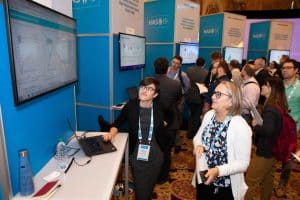 After attending Health Catalyst’s Health Analytics Summit (HAS19) last week, I must face the reality that user group meetings give me both vertigo and hope. Vertigo because it turns out I know a lot less about healthcare than the accumulated knowledge and wisdom of my fellow conferees. Hope because, despite the scale and complexity of healthcare, progress is possible.
After attending Health Catalyst’s Health Analytics Summit (HAS19) last week, I must face the reality that user group meetings give me both vertigo and hope. Vertigo because it turns out I know a lot less about healthcare than the accumulated knowledge and wisdom of my fellow conferees. Hope because, despite the scale and complexity of healthcare, progress is possible.
User groups showcase the fractal diversity of customer experiences with a vendor. While technically an industry event rather than a user group meeting, HAS19 attendees came from a panoply of providers, payers, and life sciences companies in different stages of doing business with Health Catalyst. From an adoption standpoint, some have worked with the vendor for years, implemented all or most of its applications, and/or built new applications with the vendor’s tools. Some recently decided to adopt the vendor’s offerings. Still, others are evaluating vendors and competitive options.
The contrast between discussions about industry-wide issues and specific challenges faced by individuals and organizations is genuinely striking at times. Big-picture observations about the balance of influence between payers and providers on legislators and regulators juxtaposed against informal conversations about how difficult it is for a mid-size health system to prepare and submit MIPS reporting reminds you that the day-to-day grind of healthcare never stops. That a lot of people can switch seamlessly between the two shows just how many balls healthcare people must keep in the air.
The dynamic with payers is usually in the background of many issues. Payers being choosy about which providers are in-network is old news. While providers can opt to allocate fewer appointments to patients with certain payers, the balance is clear. Payer selection of providers is more widespread than provider selection of payers. Such cold war tactics occur unbeknownst to most patients for now.
User group meetings give prospective customers some idea of what to expect from a vendor beyond just products, services, and general support. Whether the challenge is convincing management and users to adopt completely new tools and applications where none existed, or to shift their allegiance to different tools and applications, vendor actions can be critical. It seems like the most effective vendor actions are also the most intangible. Advocacy and effective communications at multiple levels in a customer organization go a lot farther than top-down, unilateral, or centralized decrees. User groups are a good place to find out how a vendor can work inside a customer organization effectively and with minimal disruption.
HAS19 was a blast of information on an array of health IT issues coupled to an attendee roster with diverse outlooks and priorities. What came through was the universal urge by providers and their payers to use HIT to improve organizational and individual performance.




0 Comments